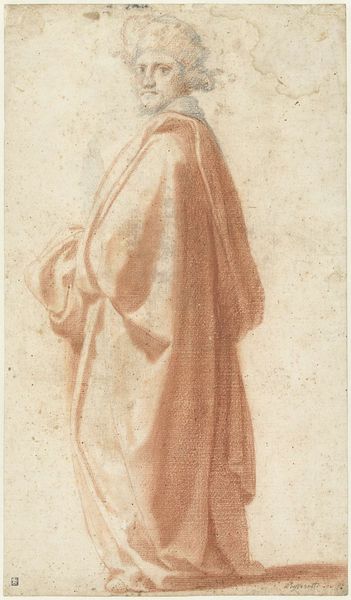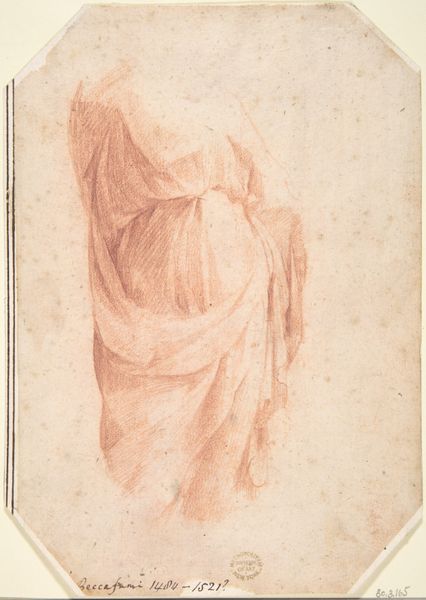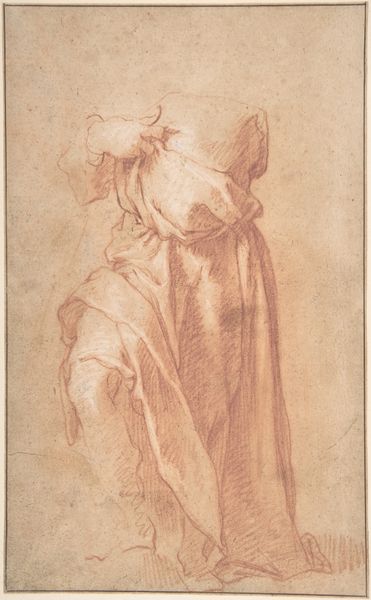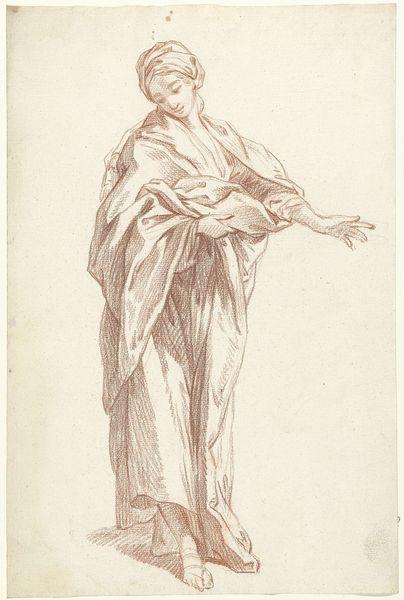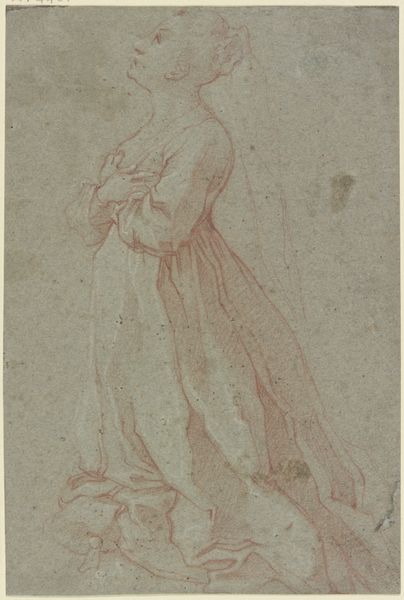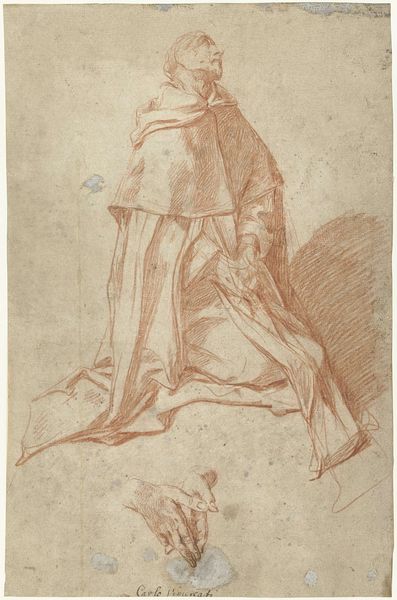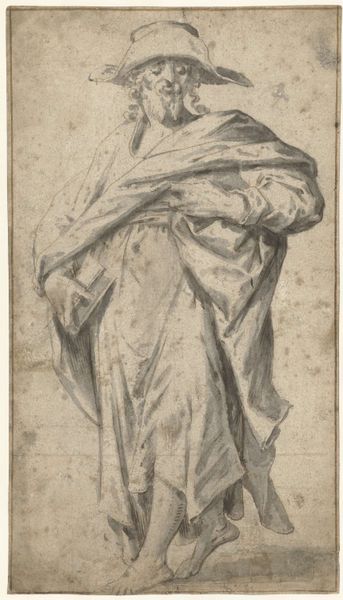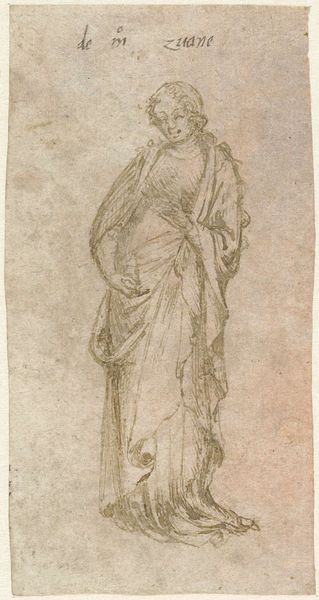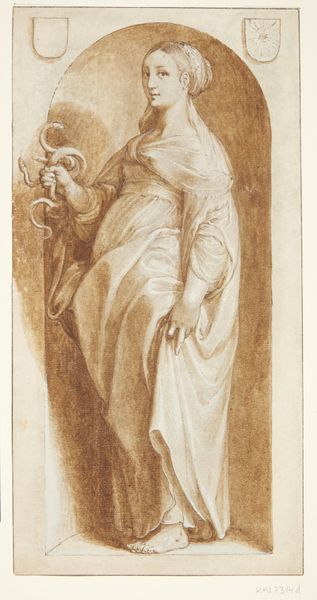
drawing, pencil
#
portrait
#
drawing
#
toned paper
#
light pencil work
#
baroque
#
pencil sketch
#
figuration
#
pastel chalk drawing
#
pencil
#
line
Dimensions: height 363 mm, width 229 mm
Copyright: Rijks Museum: Open Domain
This red chalk drawing depicts a full-length, left-facing image of Saint Andrew and was created by Jan Anton Garemyn, an artist from Flanders who was active in the late 1700's. At the time it was made, the Catholic Church was still a major patron of the arts. The church used art to reaffirm its power and inspire faith among the masses during the Enlightenment when traditional beliefs were challenged. Garemyn’s Saint Andrew, draped in classical robes, is both physically present and somewhat ethereal. The red chalk lines create a sense of depth and movement while the Saint’s upward gaze conveys a sense of religious devotion. Notice the cross of Saint Andrew, also known as a crux decussata, which stands behind him and is a reminder of his martyrdom. The drawing gives us insight into the intersections of religious identity, artistic patronage, and cultural expression during the 18th century in Flanders. It serves as a reminder of the deeply personal and emotional connections that individuals have with their faith.
Comments
No comments
Be the first to comment and join the conversation on the ultimate creative platform.
